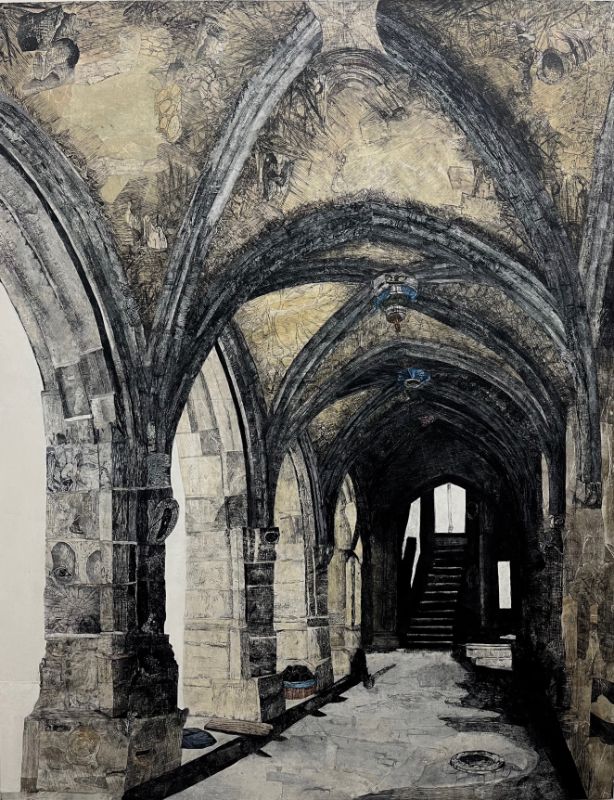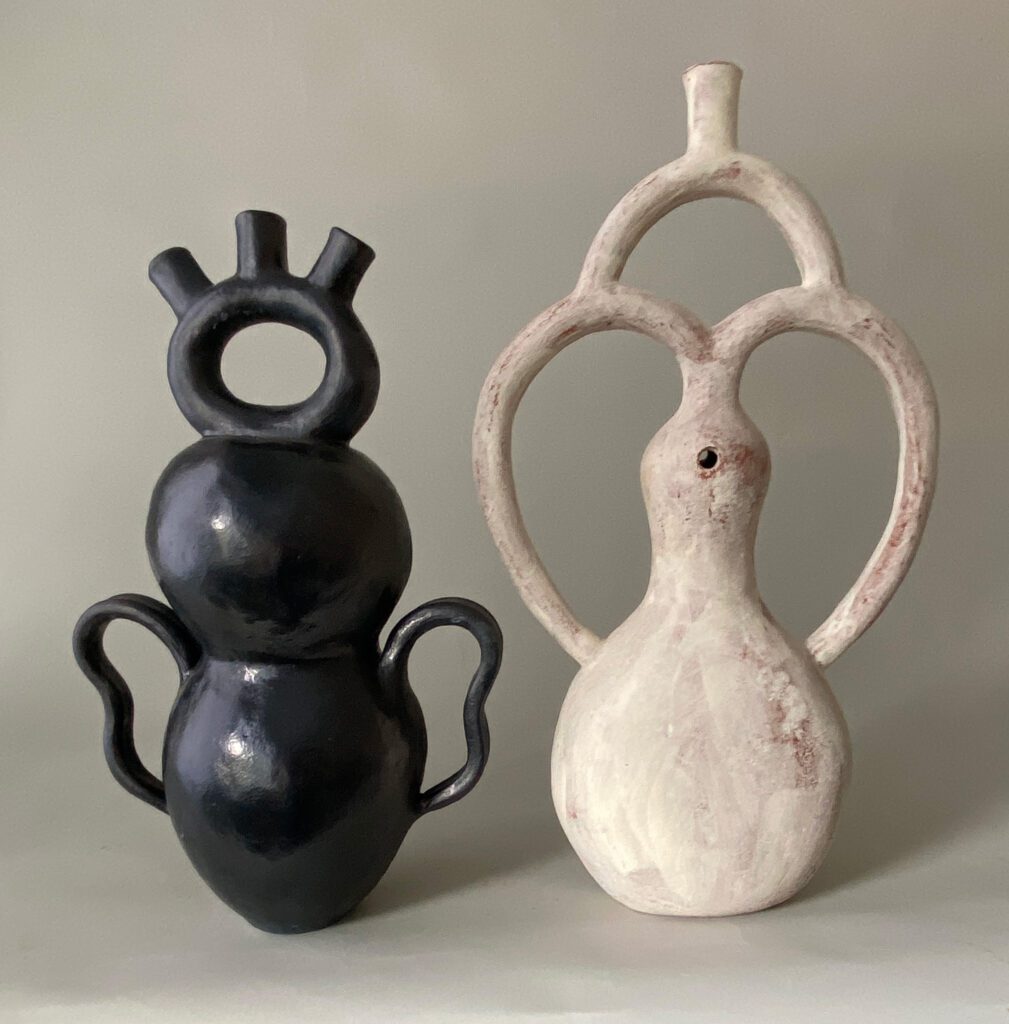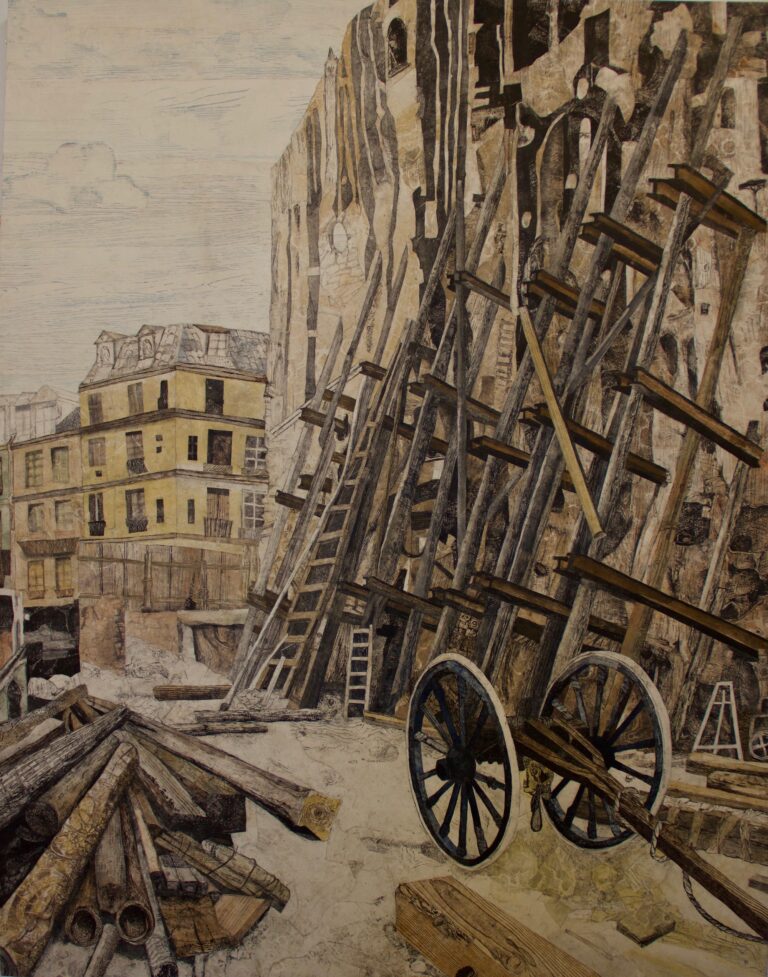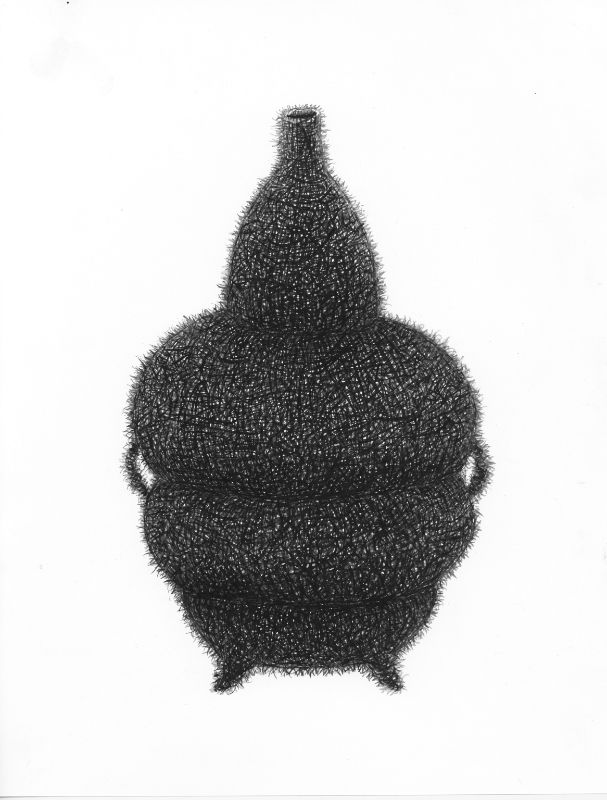OPEN SOURCE
Harry Clewans + Maria Porges
July 6 – August 5, 2023
Artists’ reception: Saturday, July 8, 1-4 pm
First Friday: July 7 & Aug 4, 5-8 pm
Artist talk: Saturday, August 5, 2 pm

Harry Clewans

Maria Porges
The term ‘open source’ refers to something that users can modify and share because its design is publicly accessible. Although this description originated in the context of software development, it also suggests the practices of artists Harry Clewans and Maria Porges. Each draws on a personal set of images and objects found in the world or in history to make something new and different. Clewans makes woodcuts based on his own drawings of a wide variety of idiosyncratic found objects. He then excerpts fragments from prints taken from the blocks, using these to create larger, more complex images: landscapes, interiors, imaginary worlds. The mosaic-like surface of each image is only visible on close examination. Porges borrows elements from throughout ceramic history, combining them into vessel-based sculpture that alludes to its multiple origins and uses while denying the possibility of any functionality. She describes these pieces, often grouped together in families, as “neither old nor new; practical nor magical, but vessels for the imagination.”

About Harry Clewans
Harry Clewans is largely self taught and has had his studio in Oakland since 1983. He has exhibited extensively in California, nationally and abroad. He has been awarded the James Phalen Award for printmaking and a fellowship at the Kala Institute of Art. His art consists of unique large scale woodblock prints made by a system of assembling hundreds of prints together to form the larger image. He has artwork in the collections of The Berkeley Art Museum and Pacific Film Archive, Achenbach Foundation for Graphic Art, Mills College Art Collection and the Judah L. Magnes Museum.

About Maria Porges
Maria Porges Since the late ‘80s, Maria Porges has pursued dual practices as both writer and artist, teaching in both areas at California College of the Arts since 2003. A graduate of Yale University (BA) and the University of Chicago (MFA), her exhibition career of sculpture and works on paper has spanned 30 years of solo and group shows at galleries, museums and alternative spaces. Porges’ current studio work explores the idea of mashups: vessels which join together elements of objects, both functional and decorative, from different cultures and periods– both conceptually and physically. In complex ink drawings as well as ceramic vessels, she reconstructs history.
